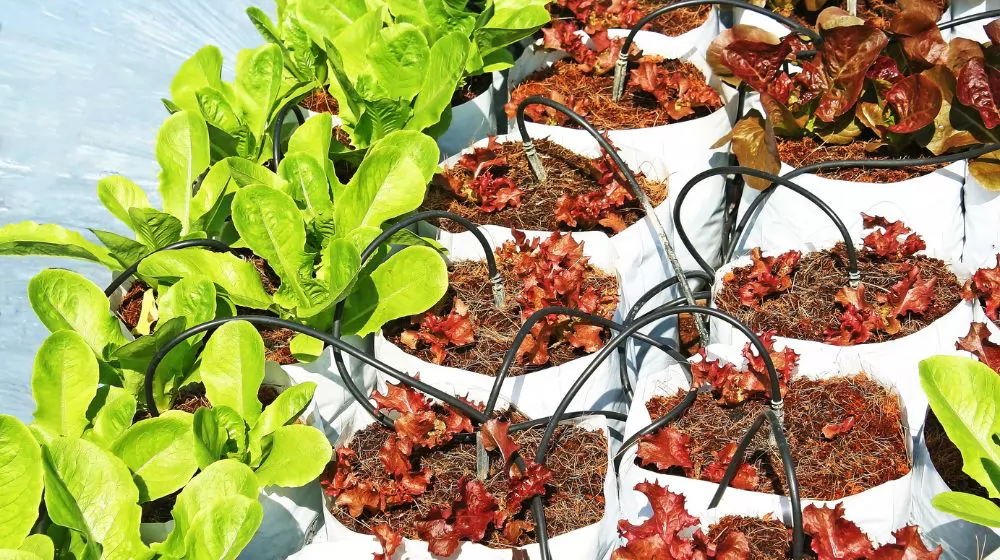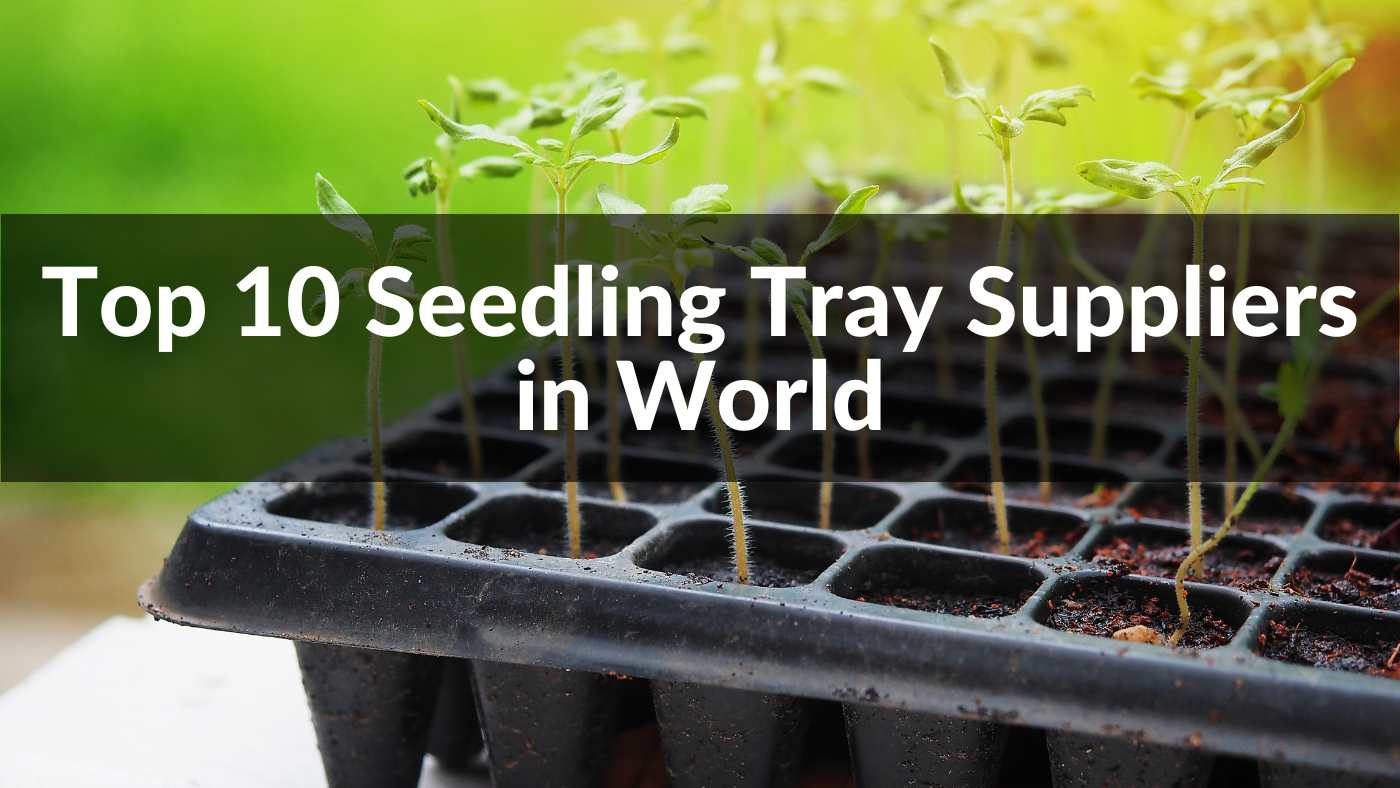
Non-woven grow bags have revolutionized the way we cultivate plants, offering a modern and efficient alternative to traditional containers. These innovative bags, crafted from breathable and durable materials, bring a myriad of benefits to both seasoned gardeners and those just starting their gardening journey. In this exploration, we delve into the distinct advantages that non-woven grow bags offer, uncovering the key features that make them an indispensable tool for plant growth.
Non-woven grow bags represent a modern and alternative approach to traditional plant containers. These bags are crafted from a specialized, non-woven fabric, typically made of synthetic materials like polypropylene. What sets them apart is the absence of weaving in the fabric's construction.
In non-woven fabric production, fibers are bonded or fused together rather than being woven into a traditional fabric structure. This unique construction results in a material that is both porous and breathable. The lack of weaving creates a flexible and adaptable container that offers a range of benefits for plants.
The manufacturing process of non-woven planting bags involves several key steps to create a durable and effective container for plant cultivation. Here's an overview of the typical manufacturing process:
Material Selection:
The process begins with the selection of suitable materials. Non-woven planting bags are commonly made from synthetic fibers, with polypropylene being a popular choice. These materials are chosen for their durability, resistance to environmental factors, and ability to be processed into a non-woven fabric.
Carding:
The selected fibers undergo a carding process. Carding involves separating and aligning the fibers to create a uniform web. This initial step ensures that the fibers are evenly distributed, contributing to the overall strength and consistency of the non-woven fabric.
Web Formation:
The aligned fibers are then formed into a web. This can be achieved through various methods, such as air-laying or wet-laying, depending on the specific manufacturing equipment and techniques used. The result is a loose web of fibers that serves as the foundation for the non-woven fabric.
Bonding:
The loose web undergoes a bonding process to transform it into a cohesive fabric. Bonding methods can include thermal bonding, chemical bonding, or mechanical bonding. Thermal bonding, for example, involves the application of heat to partially melt the fibers, creating a bond that gives the fabric its integrity.
Calendering:
Calendering is a process that involves passing the bonded fabric through rollers to further enhance its strength, density, and smoothness. This step contributes to the overall quality of the non-woven fabric and prepares it for the next stages of production.
Cutting and Shaping:
Once the non-woven fabric is prepared, it is cut and shaped into the desired dimensions for the planting bags. This step involves precision cutting to create individual pieces that will be assembled into the final containers.
Sewing or Heat Sealing:
The cut pieces are either sewn or heat-sealed to form the actual bags. Sewing involves stitching the edges together, while heat sealing uses heat to bond the material without the need for additional stitching. The chosen method depends on the specific design and intended use of the planting bags.
Quality Control:
Throughout the manufacturing process, quality control measures are implemented to ensure that the non-woven planting bags meet the required standards. This includes checking for uniformity, strength, and proper dimensions.

The material characteristics of non-woven planting bags play a crucial role in their effectiveness as containers for plant cultivation. Here are key attributes that define the unique qualities of these bags:
Porous Structure:
Non-woven planting bags are characterized by a porous structure. The material, typically composed of synthetic fibers like polypropylene, is created by bonding or fusing fibers together without weaving. This results in a fabric with small pores, facilitating excellent air circulation around the plant's roots. The porous nature supports optimal aeration, preventing issues such as overwatering and promoting a healthy root system.
Breathability:
The breathable nature of non-woven fabric is a significant advantage for plant health. The material allows the exchange of gases, including oxygen and carbon dioxide, between the soil and the external environment. This ensures that the plant's roots receive a sufficient supply of oxygen, contributing to enhanced growth and vitality.
Flexibility:
Non-woven planting bags exhibit a flexible and adaptable nature. The absence of weaving in the fabric's construction allows the bags to conform to the shape of the growing plant's roots. This flexibility accommodates the natural development of the root system, providing a comfortable and supportive environment for plant growth.
Durability:
The choice of synthetic materials like polypropylene contributes to the overall durability of non-woven planting bags. These materials are resistant to degradation caused by environmental factors such as sunlight and moisture. The durability ensures a longer lifespan for the bags, allowing for multiple growing seasons and reducing the need for frequent replacements.
Lightweight Design:
Non-woven planting bags are lightweight, making them easy to handle and transport. This characteristic is particularly advantageous for both professional and amateur gardeners. The lightweight design allows for convenient rearrangement of plants, easy transportation, and hassle-free storage when not in use.
Enhanced Drainage:
The non-woven fabric's structure promotes efficient drainage. Excess water can easily escape through the porous material, preventing waterlogged soil and reducing the risk of root rot. This enhanced drainage is especially beneficial for plants that are sensitive to overwatering, ensuring a well-regulated moisture level in the growing medium.
Resistance to Decay:
Non-woven planting bags are designed to resist decay and decomposition. This resistance is essential for maintaining the integrity of the bags over time, even when exposed to varying environmental conditions. The resistance to decay contributes to the longevity of the bags and their ability to provide a stable growing environment for plants.
Optimal Aeration:
One of the primary benefits of using non-woven planting bags is their ability to provide optimal aeration for plant roots. The porous structure of the non-woven fabric facilitates air circulation, preventing issues associated with overwatering and promoting a healthy root system. Improved aeration is particularly beneficial for plants that require well-oxygenated soil.
Enhanced Drainage:
Non-woven planting bags excel in drainage efficiency. The porous material allows excess water to escape easily, preventing waterlogging in the soil. This feature is crucial for maintaining the right balance of moisture around the roots and reducing the risk of root rot. Enhanced drainage contributes to overall soil health and plant vitality.
Flexible and Adaptable Design:
The flexibility of non-woven planting bags is advantageous for accommodating the natural growth of plant roots. Unlike rigid containers, these bags conform to the shape of the roots, providing a more comfortable and supportive environment. This adaptability allows plants to develop a well-structured and expansive root system.
Lightweight and Portable:
Non-woven planting bags are lightweight, making them easy to handle and transport. This characteristic is especially valuable for gardeners who may need to move or rearrange plants. The lightweight design enhances the convenience of gardening activities, allowing for flexibility in garden layouts and easy relocation of plants.
Durable Construction:
The use of durable synthetic materials, such as polypropylene, in non-woven planting bags contributes to their longevity. These materials resist degradation from environmental factors, ensuring that the bags maintain their structural integrity over time. The durability of the bags makes them a sustainable and cost-effective choice for multiple growing seasons.
Space Efficiency:
Non-woven planting bags come in various sizes and shapes, allowing for efficient use of space in gardening. Their flexibility enables them to fit into tight or unconventional spaces, making them suitable for balcony gardens, small yards, or indoor cultivation. This space efficiency maximizes the potential for growing a variety of plants in diverse settings.
Reduced Risk of Disease:
The breathable nature of non-woven fabric helps create an environment that is less conducive to the development of certain plant diseases. Proper aeration and drainage contribute to soil health, minimizing conditions that favor the growth of harmful pathogens. As a result, plants in non-woven planting bags are less susceptible to diseases associated with excess moisture.
Easy Storage and Reusability:
Non-woven planting bags are easy to store when not in use, thanks to their foldable and compact design. This feature is particularly advantageous for seasonal gardening or when space is limited. Additionally, the durability of the bags allows for multiple uses over different growing seasons, making them a sustainable choice for avid gardeners.

Non-woven planting bags stand out as versatile containers that are well-suited for a diverse range of plants. Their adaptable and breathable nature makes them an ideal choice for cultivating various species, whether indoors or outdoors. Here's why non-woven planting bags are suitable for a variety of plants:
Adaptability to Different Plant Types:
The flexible design of non-woven planting bags accommodates the specific growth habits and root structures of different plants. Whether cultivating flowering plants, herbs, vegetables, or even small trees, these bags conform to the unique needs of each species. This adaptability makes them suitable for a wide range of horticultural applications.
Ideal for Container Gardening:
Non-woven planting bags are particularly well-suited for container gardening, where space may be limited. Their lightweight and portable nature make them perfect for balcony gardens, patios, or urban spaces. Gardeners can easily arrange these bags to create diverse and aesthetically pleasing container gardens, allowing for creativity in plant placement.
Indoor and Outdoor Use:
The versatility of non-woven planting bags extends to both indoor and outdoor cultivation. Indoors, these bags can be used for potted plants, herbs on windowsills, or indoor gardens. Outdoors, they thrive in traditional garden settings or even on unconventional surfaces like rooftops. This adaptability caters to the preferences and available space of the gardener.
Herb and Vegetable Gardens:
Non-woven planting bags are particularly advantageous for growing herbs and vegetables. Their excellent drainage and aeration properties create an environment conducive to the health and productivity of culinary plants. Gardeners can enjoy the convenience of having fresh herbs and vegetables within easy reach, whether placed on a kitchen windowsill or a backyard garden.
Flower Beds and Ornamental Plants:
These bags are equally suitable for cultivating ornamental plants and flowers. The flexibility of non-woven bags allows for creative landscaping, enabling the arrangement of flowers in unique patterns or designs. The breathable fabric supports the healthy growth of ornamental plants, ensuring vibrant blooms and lush foliage.
Fruit Trees and Shrubs:
Non-woven planting bags are also a viable choice for growing small fruit trees and shrubs. The bags provide a supportive environment for root development, and their lightweight design makes it easier to manage and move plants as needed. This versatility is especially beneficial for those interested in cultivating fruit-bearing plants in limited spaces.
Seasonal Plants and Annuals:
Gardeners who enjoy changing their plant arrangements with the seasons will find non-woven planting bags to be a practical choice. The bags are easy to store when not in use, and their durability allows for reuse in different growing seasons. This adaptability is convenient for those who like to experiment with different plant varieties throughout the year.
Non-woven planting bags contribute to environmental friendliness through several key features, making them a sustainable choice for conscientious gardeners. Here are ways in which these bags support environmental well-being:
Reusable and Durable:
Non-woven planting bags are designed to be durable, with many options featuring a lifespan that extends across multiple growing seasons. This longevity reduces the need for frequent replacements, minimizing the environmental impact associated with disposable containers. Gardeners can reuse these bags, promoting a more sustainable and resource-efficient gardening practice.
Reduced Plastic Waste:
The use of non-woven fabric, often derived from materials like polypropylene, offers an alternative to traditional plastic pots. Unlike rigid plastic containers, non-woven bags are flexible and can be folded, reducing the space they occupy when not in use. This feature contributes to a reduction in plastic waste and the overall environmental footprint associated with gardening materials.
Minimal Production Impact:
The manufacturing process of non-woven planting bags typically involves fewer resources compared to traditional plastic containers. The materials used, such as synthetic fibers, can be efficiently processed, and the bonding methods employed in production contribute to resource conservation. This results in a lower environmental impact during the manufacturing phase.
Biodegradable Options:
Some non-woven planting bags are designed to be biodegradable, offering an even more environmentally friendly option. These bags break down naturally over time, reducing the long-term environmental impact associated with traditional plastic containers. Biodegradable alternatives align with sustainable practices, especially for gardeners seeking eco-friendly solutions.
Energy-Efficient Production:
The manufacturing process of non-woven planting bags often requires less energy compared to the production of traditional plastic containers. The absence of weaving in the fabric construction and the efficient bonding methods contribute to a more energy-efficient process. This aligns with sustainable practices and reduces the overall carbon footprint associated with gardening materials.
Space-Efficient Storage:
Non-woven planting bags' foldable and compact design makes storage more space-efficient. This feature is especially important for minimizing the environmental impact of excess packaging and storage space required for traditional pots. The reduced storage requirements contribute to a more efficient use of resources.
Recyclability:
While not all non-woven planting bags are recyclable, some variations can be recycled. Gardeners can check product specifications and local recycling facilities to ensure proper disposal. Choosing recyclable options adds an extra layer of environmental consideration, encouraging responsible waste management practices.
Support for Sustainable Gardening Practices:
By choosing non-woven planting bags, gardeners actively participate in sustainable gardening practices. The bags' features, such as breathability and enhanced drainage, contribute to healthier plants, reducing the need for excessive water and potentially harmful chemicals. This aligns with environmentally conscious gardening practices that prioritize the well-being of both plants and the ecosystem.

The benefits of utilizing non-woven grow bags extend far beyond the simplicity of their design. As we've discovered, these bags provide optimal aeration, enhanced drainage, and a versatile solution for a variety of plants. If you need non-woven planting bags for your garden or botanical garden, Linkwin can provide them for you and provide you with solutions. Please feel free to contact us!











We use cookies to make the website work, to provide advanced features, social media and traffic analysis, and we use analytics and third-party advertising cookies. If you choose to click "Deny All", you will retain the default setting of not allowing the use of cookies or other tracking tools other than technical tools.

